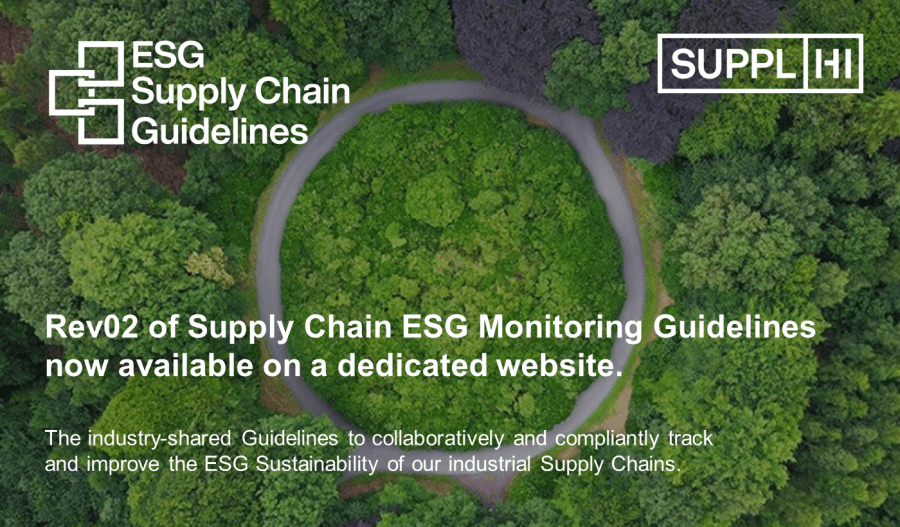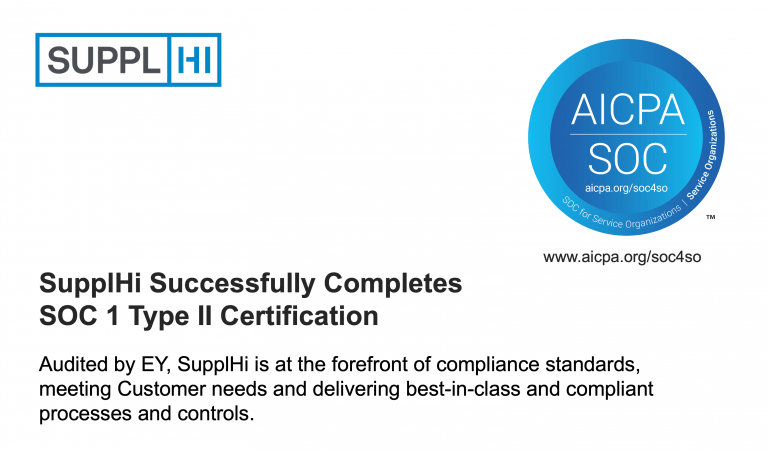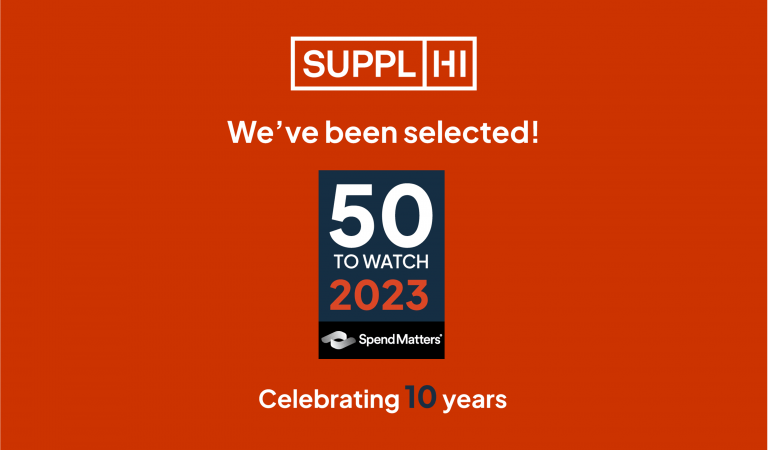THE NEED
The last few years have seen an increase in demand of corporate social responsibility, i.e. the idea that a business has a responsibility both towards the society as well as the environment in which it operates. This idea has been synthetized in the acronym ESG – Environment, Social, Governance – criteria tied also with that of Responsible Investment.
In industrial B2B, the level of ESG Sustainability of a company is given not just by the company’s actions, but on those of its Supply Chain as well. In fact, ESG Sustainability in industrial B2B can represent up to 80% of an organization’s revenues, while the financial system is increasingly driven by ESG criteria.
Although there exist several ESG international standards and industry-neutral solutions, not all Sustainability issues matter equally to each industry. The same Sustainability issue can manifest differently in the Supply Chain of industrial B2B and it is important to create and use a tool able to monitor and, possibly, improve every issue at stake.
Moreover, industrial Supply Chains are often characterized by a great presence of SMEs, spread all over the world and with several layers of Sub-Vendors (system integrators, foundries, raw materials, …) of their own, a characteristic which requires continuous Supplier engagement, needed to provide constantly updated ESG information.
A COLLABORATIVE SOLUTION
In July 2019, ANIMP – an Association of international EPC Contractors, components manufacturers and service providers – created an open and industry-wide workgroup to tackle the above-mentioned issues and create industry-shared ESG Guidelines for the Industrial Supply Chain.
The working group – first-of-its-kind – saw the cooperation of several co-innovators and released a first edition of the Guidelines in February 2020, after months of discussion, consideration and research.
The following month welcomed the deployment of the Guidelines on SupplHi’s innovative platform for the Management of Vendors for industrial equipment and services, which allowed the integration of a dedicated ESG module and the collection of data both from Vendors with profiles already existing on the platform as well as with new Vendors, invited to take part to the project.
2021 has seen major development of the Guidelines: in March, the workgroup conducted the first calibration of the Guidelines based on data collected from over 1.000 Vendors from all over the world. This data allowed the first-ever calculation of vendors’ ESG scores according to the industry-shared ESG Guidelines and this in turn opened the road to changing from a monitoring-focused model to one centered on “sharing feedback and rewards” to stimulate constant improvement and ensure compliance with the latest regulations.
June 2021 saw the launch of the industry-wide open program called “ESG Supply Chain Guidelines”.
THE GUIDELINES
After less than six months from the Kick-Off meeting of the open workgroup for the creation of industry-shared ESG Guidelines, the first official version of the Guidelines was released on February 13, 2020.
This first drafting of the Guidelines saw the participation of 21 members representing international EPC Contactors, Large OEMs and SMEs and other players of the industrial sector, for a total of 14 co-innovator companies representing numerous branches of the industrial sector, such as Oil & Gas, Chemicals, Power, Renewables, Shipbuilding, Steel & Metals, Cement. The hard work put into the drafting of the document by the 14 players resulted in a 65-pages long document organized in 5 main sections.
The objective of the Guidelines – clearly stated in the initial pages – is to
“define the recommended set of information and assessment metrics necessary to assess the Environmental, Social and Governance (ESG) Sustainability aspect of a Supply Chain in the Plant Engineering industries.”
Although ambitious, this goal goes hand in hand with the current global context, where the three main pillars of sustainability – Environment, Social and Governance – are being considered more and more relevant in the evaluation of a business model, becoming not just a core value, but a true asset – although an intangible one. ESG Sustainability has come to represent an added-value opportunity both for differentiating from the global competition as well as for increasing the chances of economic development.
To create common, industry-shared Guidelines means to tackle a core characteristic of the industrial world, i.e., the fact that B2B Industrial Supply Chains have a strong incidence on Buyer organizations, as they can account for up to 80% of Buyers’ revenues and are typically composed of up to 90% of SMEs. Therefore, much as it happens with the Scope 3 Carbon Emissions Estimates, in order to assess a buyer organization’s Sustainability level, it is necessary to constantly monitor the sustainability level of its vendors as well, across the entire supply chain.
THE APPROACH
After the 10 core principles of the Guidelines were defined, ranging from standardization to easy comparability, from constant update to global validity, the workgroup followed a 5-step approach to draft the Guidelines:
1. Mapping existing Sustainability requirements by End-Users to Contractors, international standards and norms, and 100+ international Buyer organizations’ questionnaires on Sustainability;
2. Defining recommended practices – including Assessment Visits – per each category of supplies;
3. Defining metrics for the creation of an industry-standard and industry- shared Vendor Sustainability Score;
4. Exploring the benefits of an industry-shared and constantly updated platform to host information on Vendor questionnaire, Assessment and Sustainability Metrics
5. Designing an approach to provide common guidance on how to improve Vendors’ Sustainability Scores and share recommended practices, with a focus on SMEs.
THE QUESTIONNAIRE
Once the approach was defined and the mapping complete, the workgroup proceeded to create six categories of suppliers, following SupplHi’s Standard Categorization booklet: Critical Equipment, Non-critical Equipment, Construction Services, Fabrication at Yards, Logistics Services, Other Services. Each category of supplies has its own template of questionnaire, although the differences were kept to the minimum, with no more than 30% of the questions per category differentiating from the common template.
The questionnaire and the answers provided by Vendors are hosted on SupplHi (www.supplhi.com), the independent provider of the industry-shared platform. The SupplHi platform:
- cross-checks Vendors’ basic data to avoid any duplicates;
- understands Vendors’ relationships, company structure and operational status;
- collects information on destination of Vendors’ locations;
- tracks provided and missing Vendors’ information;
- notifies Vendors in case provided information is about to expire.
THE ESG METER, THE OUTCOME OF THE ESG SUPPLY CHAIN GUIDELINES
The tool allowing the deployment of the Guidelines and the calculation of the scores is being developed at the time of the first issuance of the Guidelines, but it is planned to be launched in early May 2020. The tool, which will be hosted on the SupplHi platform, will be called “ESG Meter” and will be updated after every new release of the Guidelines, to reflect the latest state-of-the-art described in the document (read more about the second revision of the Guidelines here).
The goal of the ESG Meter is to allow companies to assess their own level of ESG sustainability and compare it with the average level of their industrial category (electrical panels, cables, motors…), and to report the recommended ESG initiatives for improving the companies’ sustainability level. In the words of SupplHi CEO & Director Giacomo Franchini, “the SupplHi SaaS ESG Meter solution will allow buyers and vendors to monitor their ESG performances and to understand how to improve their capabilities”.
THE SCORE
Upon completion of the ESG questionnaire, every Supplier obtains a score of their sustainability level for each one of the ESG aspects – Environment, Social and Governance. The scores are made available on Vendors’ profile in SupplHi platform, on the Vendor’s profile, and are calculated through the ESG Meter. In respect with the transparency and as a testimony of the quality of the obtained scores, Vendors are encouraged to share their ESG scores with their network, also using the dedicated PR kit at their disposal.
The scores are always based on the latest revision of the Guidelines and are expressed on a scale ranging from A (highest evaluation) to E (lowest evaluation) and are made available on the SupplHi Vendor Management platform together with the recommended suggestions to further improve the Vendors’ level of sustainability.
THE REVISION #2
One of the core principles of the Guidelines is to keep the Guidelines constantly updated to cope not just with the newly introduced practices, international requirements and standards, but also to include all considerations brought forward by the constant analysis of the results of the Guidelines. The revision 02 was driven mainly by this second case and focused on 25% of the questions making up the questionnaire, recalibrating the weights assigned to the answers given by the interviewees.
The need to update the Guidelines was born out of the data collected from the initial several thousands of suppliers who filled in the questionnaire on ESG Sustainability and the relative insights. Several in-depth analyses were performed on the data collected, both at a macro level as well as on single suppliers, allowing the workgroup a more precise understanding of the tool and of the improvement areas.
The most considerable changes brought to this version – other than a few aesthetic improvements – focus on the recalibration of weight related to questions within two main areas:
- Certifications
- Pledges taken by Suppliers on different matters
As far as certifications are regarded, the rev02 of the Guidelines sees an increased focus on environmental policy statements and certifications (ISO 14001) and a reduced focus on SA8000 certification.
On the aspect concerning pledges taken by suppliers, rev02 implements an increased focus on vendor’s previous convictions related to environmental damages and practices as well as on vendor’s respect of human rights, freedom of association and fight against child labor. One of the other major updates concerns vendors’ assessment of ESG criteria on their suppliers, which has received an increased weight.
This second version of the Guidelines precedes of just a few months the rev03, set to be published in December 2021, which will address a larger number of topics within the ESG questionnaires, add new questions to the questionnaire and simplify a few aspects related to the categorization of suppliers.



